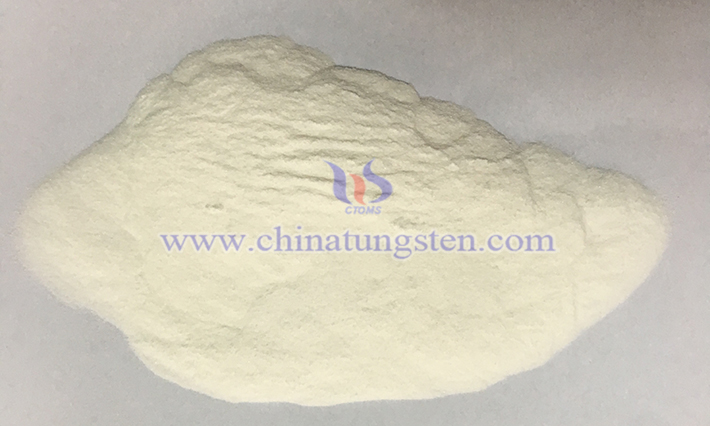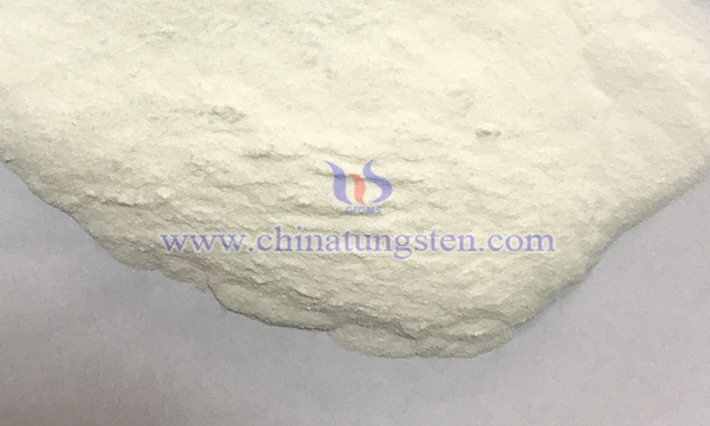Physical and Chemical Properties of Ammonium Metatungstate
- Details
- Category: Tungsten Information
- Published on Monday, 14 April 2025 11:05
Ammonium metatungstate (AMT) produced by CTIA GROUP LTD is a vital tungsten compound widely applied in catalysts, tungsten alloys, electronic materials, and the chemical industry. Its physicochemical properties underpin its unique advantages in industrial production and applications.

At room temperature, AMT from CTIA GROUP LTD typically appears as a white or slightly yellowish crystalline powder with a monoclinic crystal structure, exhibiting high crystallinity. High-quality AMT products feature uniform particles, with sizes predominantly ranging from 10 to 50 micrometers. Under a microscope, the crystals appear as regular spherical or near-spherical shapes. AMT has a density of approximately 2.3-2.8 g/cm³, is odorless, feels dry to the touch, and lacks hygroscopicity. However, prolonged storage in humid environments may lead to minor moisture adsorption.
Solubility: AMT boasts excellent solubility, a key characteristic for its industrial applications. It is highly soluble in water, far surpassing other tungstate compounds like ammonium paratungstate (APT). Its aqueous solution is weakly acidic, with a pH typically ranging from 3.5 to 5.0, depending on concentration and preparation processes. AMT is insoluble in organic solvents such as ethanol and acetone, as well as in neutral or weakly alkaline solutions. In strong alkaline solutions (e.g., sodium hydroxide), it decomposes to form tungstate ions.
Thermal Stability: AMT exhibits moderate thermal stability, closely tied to its hydrate structure. At room temperature, it remains stable and resistant to decomposition. When heated to 100-150°C, it begins to lose crystal water, resulting in a slight mass loss (approximately 1.5%-3%). At 200-300°C, further decomposition occurs, releasing ammonia and water vapor, transforming into tungsten trioxide (WO₃) or other intermediate tungsten oxides. Complete decomposition typically occurs above 400-500°C, yielding yellow WO₃ powder as the final product.

Chemical Reactivity: AMT displays certain chemical reactivity, primarily in acid-base reactions and redox properties. In acidic conditions, it may undergo polymerization to form more complex polytungstate structures. In strongly alkaline environments, its Keggin structure dissociates, producing mononuclear tungstate ions. While AMT itself is not strongly oxidative, it can serve as a tungsten source in redox reactions under high temperatures or in the presence of catalysts. For instance, in catalyst preparation, AMT often reacts with transition metal salts to form highly active composite oxides.
Electrical and Surface Properties: AMT has low electrical conductivity, indicating limited ion mobility, making it suitable as a raw material for high-purity electronic materials. Its surface properties, such as specific surface area, vary depending on the preparation method. Products from spray drying can achieve a specific surface area of 5-10 m²/g, which is advantageous for catalyst carrier applications.
Safety and Environmental Considerations: AMT is non-toxic and non-corrosive, ensuring high operational safety. However, during high-temperature decomposition, the release of ammonia gas requires proper handling to prevent environmental pollution.
- Chinatungsten Online: ammonium-metatungstate.com
- CTIA GROUP LTD: en.ctia.group
- Tungsten News & Price: www.ctia.com.cn
- Molybdenum News & Price: news.molybdenum.com.cn
- Tel.: 86 592 5129696; Email: sales@chinatungsten.com



 sales@chinatungsten.com
sales@chinatungsten.com